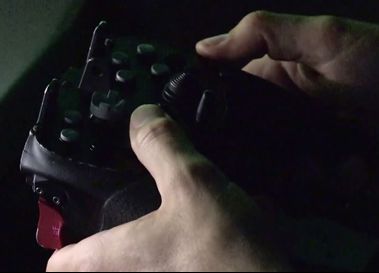The exercises that took place from September to November aboard the USS Ponce, represent a fundamental step for the US Navy that on the one hand demonstrated the effectiveness of a laser weapon on a military ship and on the other, the full compatibility of the two systems.
The ship chosen to perform the laser tests, which started during the summer, is the USS Ponce, an Austin class amphibious transport unit. According to the US Navy, laser technology has been designed to eliminate asymmetric threats such as drones, small planes and motorboats: all potential threats to warships in the Persian Gulf.
 The system is managed as if it were a video game. The combat station resembles that of a home console (frame on the right). The operator can face multiple threats using a series of growing options: from non-lethal measures, dazzling the target, to lethal destruction, if necessary.
The system is managed as if it were a video game. The combat station resembles that of a home console (frame on the right). The operator can face multiple threats using a series of growing options: from non-lethal measures, dazzling the target, to lethal destruction, if necessary.
The Solid-State Laser-Technology Maturation program involves the development of ready-to-use combat laser prototypes, to be installed on US Navy ships such as the Littoral Combat Ship starting from the 2020.
In addition to greater accuracy and speed of fire, laser weapons provide greater security. The laser, in fact, does not base its power on the caliber and gunpowder, but on simple electrical energy. When the electricity is on board, the weapon continues to fire. Finally, without considering the paltry cost of a laser strike compared to a multimillion-dollar missile: just under a dollar.
The laser has already proved its effectiveness in the 2011, destroying small boats and in the 2012, knocking down several UAVs.
From the US Navy, however, they do not mention the problems that have enveloped the new weapon system since its development. The laser, in fact, tends to lose effectiveness in the presence of bad weather conditions or with turbulence in the atmosphere. The Navy, some time ago, said that it was able to overcome the unknown bad weather, confirming however the loss of effectiveness of the laser beam in case of cloudy skies, precipitation or dust in the air.
Franco Iacch
(photo: Office of Naval Research)












